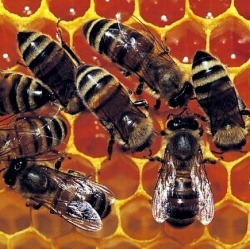
A new study found out that the insects are having a hard time finding flowers because air pollutants are altering floral scent molecules. The study published o suggests that pollutants such as ozone, nitrate radical and hydroxyl radical are responsible for "the degradation and the chemical modification of scent plumes."
These changes reduce the distance floral scent molecules can spread, a significant finding as such molecules are used by bees to find flowers for pollination. The study found that "even moderate air pollutant levels" can alter the chemical composition of these vital scents, according to its abstract.
Researchers used a computer to simulate the concentration of air pollutants in floral scents as well as the movement of scent plumes affected by various wind patterns. They then entered bees’ movement patterns as they foraged for pollen and ran 90,000 computer simulations varying the levels of wind resistance and pollution.
A study of the honey bee’s genome published in 2006 in the journal Genome Research says honey bees have 170 odorant receptors that can help them sniff out and distinguish different types of flowers, so it’s important to understand how critical a bee’s sense of smell is to its ability to find food.
The results of Penn State researchers’ computer simulations showed that even a moderate level of air pollutant such 60 parts per billion of ozone can change a floral scent composition and make it harder for bees to find their next food source. This alteration could have a dramatic effect on bees’ foraging habits and food supplies that could create "severe cascading and pernicious impacts on the fitness of foraging insects by reducing the time devoted to other necessary tasks," the study’s abstract suggests.
Jose D. Fuentes, a professor of meteorology and atmosphere science at Penn State and lead author on the study, says that floral scents need to be able to travel a great distance in order for bees to find them. He estimates that the nests of bees and other insects that pollinate flowers can be located up to 3,000 feet away from their nearest food source.
So a pollutant that degrades the quality of a floral scent and lessens its reach could have a dramatic effect on bees’ pollination habits and patterns, Fuentes says.
"We found that when we confused the bees’ environment by modifying the gases present in the atmosphere, they spent more time foraging and would bring back less food, which would affect their colonies," Fuentes says. "It’s similar to being asked to get a cup of coffee at the nearest cafeteria while you are blindfolded. It will be hard to locate the coffee shop without using visual cues. The same could happen to insect pollinators while foraging for food in polluted air masses."
This study comes at a time when bee populations are in severe decline. A survey released in May by the U.S. Department of Agriculture and the National Institute of Food and Agriculture’s Bee Informed Partnership found that more than one quarter of America’s bee colonies were lost during the 2015-16 winter season. But some initiatives are under way to try to reverse the trend.
